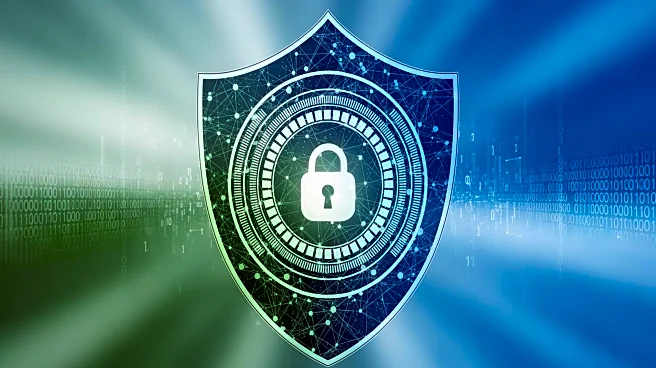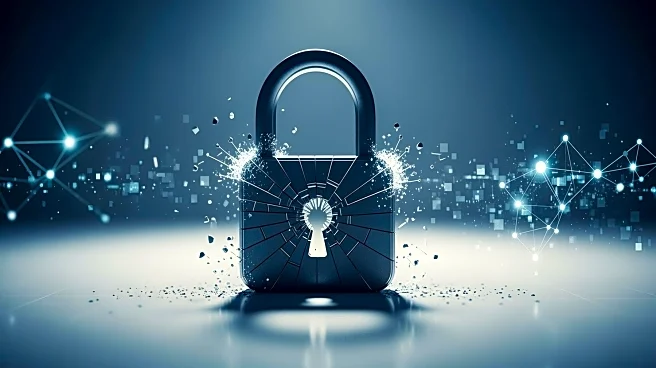What's Happening?
Recent findings from the 2025 Global Threat Landscape Report by ExtraHop reveal a significant increase in average ransomware payments, which have surged to $3.6 million this year, marking a 44% rise from $2.5
million in 2024. Despite a decline in the overall number of attacks, the damage caused by ransomware has intensified, with 70% of affected organizations opting to pay the ransom. Critical sectors such as healthcare and government agencies have faced substantial financial burdens, with payouts nearing $7.5 million, while the finance sector averaged $3.8 million per incident. The report attributes this escalation to increasingly disciplined adversaries, including groups like RansomHub, LockBit, and DarkSide, who continue to refine their methods to maximize leverage. Phishing remains the leading method of infiltration, responsible for 33.7% of attacks, followed by software vulnerabilities and supply chain compromises.
Why It's Important?
The surge in ransomware payouts underscores the growing threat posed by cybercriminals who are becoming more sophisticated in their tactics. This trend has significant implications for U.S. industries, particularly those in critical sectors such as healthcare and government, which are facing increased financial pressures due to these attacks. The report highlights the need for enhanced cybersecurity measures and awareness training to combat these evolving threats. Organizations must prioritize securing their systems against phishing and other infiltration methods to mitigate the risk of costly ransomware incidents. The financial impact on affected sectors could lead to increased costs for consumers and taxpayers, as organizations seek to recover from these substantial payouts.
What's Next?
Organizations are likely to intensify their focus on cybersecurity strategies to counter the evolving tactics of ransomware groups. This may include investing in advanced security technologies and training programs to better detect and respond to threats. As the attack surface continues to expand with the integration of public cloud infrastructure and generative AI applications, companies will need to adapt their defense efforts to protect against these vulnerabilities. The ongoing threat of ransomware may also prompt regulatory bodies to consider new policies aimed at strengthening cybersecurity standards across industries.
Beyond the Headlines
The increasing sophistication of ransomware attacks raises ethical and legal questions about the responsibility of organizations to protect sensitive data and the potential consequences of paying ransoms. As cybercriminals continue to exploit vulnerabilities in interconnected systems, there may be long-term shifts in how businesses approach cybersecurity, with a greater emphasis on collaboration and information sharing to combat these threats. Additionally, the financial burden on critical sectors could lead to broader societal impacts, including reduced access to essential services and increased costs for consumers.











